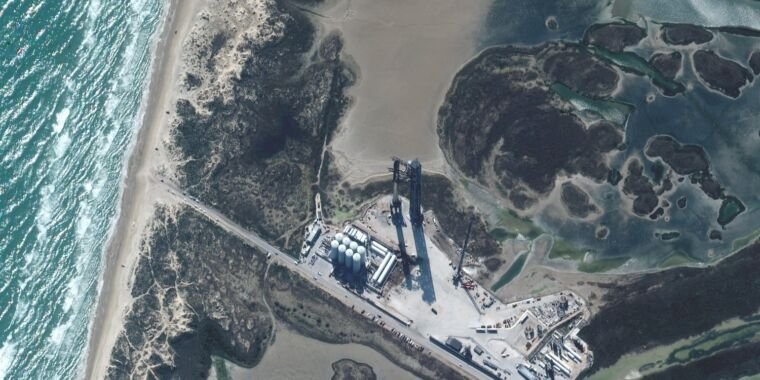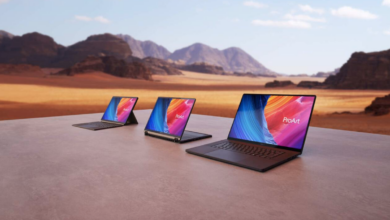Rocket Report: Starbase will expand into state park; another Japanese rocket


Welcome to Edition 6.34 of the Rocket Report! It’s Starship season again. Yes, SpaceX appears to be about a week away from launching the third full-scale Starship test flight from the company’s Starbase site in South Texas, pending final regulatory approval from the Federal Aviation Administration. Ars will be there. SpaceX plans to build a second Starship launch pad at Starbase, and the company’s footprint there is also about to get a little bigger, with the expected acquisition of 43 acres of Texas state park land.
As always, we welcome reader submissions, and if you don’t want to miss an issue, please subscribe using the box below (the form will not appear on AMP-enabled versions of the site). Each report will include information on small-, medium-, and heavy-lift rockets, as well as a quick look ahead at the next three launches on the calendar.

Astra’s founders take the company private. Astra’s three-year run as a public company is over. Chris Kemp and Adam London, Astra’s co-founders, are taking the company private after a string of rocket failures and funding shortfalls, Ars reports. Kemp and London bought the company for 50 cents a share. Astra’s board approved the transaction, the company announced Thursday, as the only alternative to bankruptcy. Kemp and London founded Astra in 2016. After emerging from stealth mode in 2020, Astra launched its light-class launcher, called Rocket 3, seven times, but five of those flights were failures. Astra went public via a special purpose acquisition company (or SPAC) in 2021, reaching a valuation of more than $2 billion. Today, its market cap sits at approximately $13 million.
What’s next for Astra? … Where Astra goes from here is anyone’s guess. The company abandoned its unreliable Rocket 3 vehicle in 2022 to focus on the larger Rocket 4 vehicle. But Rocket 4 is likely months or years from the launch pad. It faces stiff competition not just from established small launch players such as Rocket Lab and Firefly but also from new entrants as well, including ABL Space and Stoke Space. Additionally, all of these small launch companies have been undercut in price by SpaceX’s Transporter missions, which launch dozens of satellites at a time on the Falcon 9 booster. Additionally, Astra’s spacecraft engine business—acquired previously from Apollo Fusion—may or may not be profitable now, but there are questions about its long-term viability as well.
Virgin Galactic is retiring its only operational spaceship. Over the last year, Virgin Galactic has proven it has the technical acumen to pull off monthly flights of its VSS Unity rocket plane, each carrying six people on a suborbital climb to the edge of space. But VSS Unity has never been profitable. It costs too much and takes too much time to reconfigure between flights. Virgin Galactic plans to fly the suborbital spaceship one more time before taking a hiatus from flight operations, Ars reports. This, along with layoffs announced last year, will allow the company to preserve cash while focusing on the development of a new generation of rocket planes, called Delta-class ships, designed to fly more often and with more people. Michael Colglazier, Virgin Galactic’s president and CEO, says the first of the Delta ships is on track to begin ground and flight testing next year, with commercial service targeted for 2026 based out of Spaceport America in New Mexico.
Bigger and faster… The Delta ships will each carry six customers in the spacecraft’s pressurized passenger cabin, compared to a maximum of four passengers on each VSS Unity flight. Virgin Galactic’s goal is to fly each Delta ship eight times per month, and the company will do this by eliminating many of the inspections required between each VSS Unity flight. The company is building a Delta ship structural test article to put through extensive checks on the ground, validating component life and cycle limits for major components of the vehicle. This will give engineers enough confidence to forego many inspections, according to Mike Moses, president of Virgin Galactic’s spaceline operations. Virgin Galactic has nearly $1 billion in cash or cash equivalents on its balance sheet, so it’s not in any immediate financial trouble. But the company reported just $7 million in revenue last year, with a net loss of $502 million. So, there’s an obvious motivation to make a change.
A new Japanese rocket will launch this weekend. A privately held Japanese company named Space One is set to shoot for orbit with the first flight of its Kairos rocket Friday night (US time), News on Japan reports. Space One will attempt to become the first Japanese private company to launch a rocket into orbit. Japan’s existing launch vehicles, like the H-IIA, the H3, and the Epsilon, were developed with funding from the Japanese space agency. But there is some involvement from the Japanese government on this flight. The Kairos rocket will launch with a small “quick response” spacecraft for the Cabinet Intelligence and Research Office, which is responsible for Japan’s fleet of spy satellites. Kairos, which is the Ancient Greek word for “timeliness,” is made up of three solid-fueled stages and a liquid-fueled upper stage. It can place a payload of up to 550 pounds (250 kilograms) into low-Earth orbit.
Winning hearts and minds… The Kairos rocket will take off from Space One’s Space Port Kii, located on a south-facing peninsula on the main Japanese island of Honshu. This new launch site is hundreds of miles away from Japan’s existing spaceports. Local businesses see the arrival of the space industry in this remote part of Japan as a marketing opportunity. A local confectionery store, not wanting to miss the opportunity to attract visitors, is selling manju shaped like rockets. There are two paid viewing areas to watch the launch, and a total of 5,000 seats sold out in just two days, according to News on Japan. (submitted by tsunam)
UK spaceport project to get 10 million pounds from government. The UK government has pledged 10 million pounds in funding to SaxaVord Spaceport in Scotland, European Spaceflight reports. This funding is sorely needed for SaxaVord, which slowed construction last year after its developer ran into financial trouble. In the last couple of months, SaxaVord raised enough money to resume payments to the contractors building the launch site. The UK government’s pledge of 10 million pounds for SaxaVord apparently is not quite a done deal. The UK’s science minister posted on X that the funding was “subject to due diligence.” SaxaVord will eventually have three launch pads, one of which has been dedicated to German launch startup Rocket Factory Augsburg. This company’s rocket, RFA ONE, is expected to be the first orbital launch from SaxaVord later this year.
The UK spaceport scene… The UK government, local entities, and private industry are making a pretty serious effort to bring orbital launches to the British Isles. Spaceport Cornwall became the first UK facility to host an orbital attempt last year with the failed launch of Virgin Orbit’s LauncherOne rocket, which was released from a carrier jet that took off from Cornwall. There are several vertical launch spaceports under construction or in the concept development phase. SaxaVord appears to be among those closest to reality, along with Sutherland spaceport, also in Scotland, to be used by the UK launch startup Orbex Space. (submitted by Ken the Bin)
Source link




